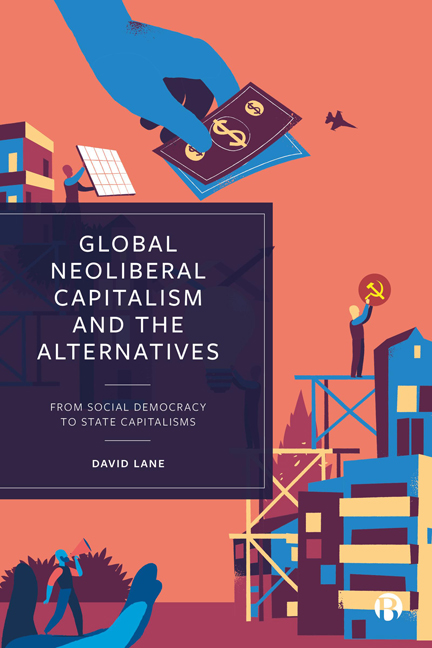Book contents
- Frontmatter
- Contents
- List of Figures, Tables and Boxes
- About the Author
- Acknowledgements
- 1 Introduction
- 2 Global Neoliberalism and What It Means
- 3 Neoliberalism: A Critique
- PART I Socialist Contenders and Their Demise
- PART II Capitalist Globalisation and Its Adversaries
- Appendix 16A Social Formations: Patterns of Coordination and Control
- Appendix 16B Regulated Market Socialism
- Index
11 - Self-destructing Propensities of Global Capitalism
Published online by Cambridge University Press: 20 January 2024
- Frontmatter
- Contents
- List of Figures, Tables and Boxes
- About the Author
- Acknowledgements
- 1 Introduction
- 2 Global Neoliberalism and What It Means
- 3 Neoliberalism: A Critique
- PART I Socialist Contenders and Their Demise
- PART II Capitalist Globalisation and Its Adversaries
- Appendix 16A Social Formations: Patterns of Coordination and Control
- Appendix 16B Regulated Market Socialism
- Index
Summary
As we noted in Chapter 9, opinion about the effects of global capitalism is divided. Positive evaluations dwell on the ways in which information technology facilitates diverse forms of exchange and on the benefits it brings by reducing costs, widening markets and facilitating access to information, knowledge and services. Opponents view globalisation as a set of negative processes flowing from capitalist structures of ownership and international organisations and associations which are not subject to any form of democratic accountability. For others, globalisation is a consequence of modernity and poses a threat to traditional values.1 Most criticism is directed at the economic features of globalisation that are embedded in a neoliberal form of capitalism and such critics do not separate the effects of globalisation, which might be positive (or negative), from capitalism, which might be negative (or positive).
Some believe that faults can be corrected without major changes in the world capitalist system; they advocate a democratically regulated form of globalisation which retains capitalist features. Others, in contrast, contend that the benefits of globalisation cannot be achieved without a fundamental move away from the capitalist system and advocate a shift to a post-capitalist or socialist form of globalisation. The latter we consider in Chapter 14. Many look for, or detect, changes already occurring within capitalism and they envisage not only a ‘post-global’ but an ascendant ‘post capitalist’ social system. These approaches represent a return to internationalism in which states mediate the reciprocated forms of global exchange. Finally, there remain the critical ‘anti-globalisation’ and ‘anti-capitalism’ perspectives, which regard capitalistic globalisation as politically and ecologically harmful. They seek to reverse these tendencies by moving to various forms of autonomy and self-government with democratic forms of control.
Ideological critiques gained momentum after the economic crisis of 2007 and have emphasised contradictions within capitalism rather than globalisation as the major target of change. Opponents condemn the global financial system and transnational corporations (TNCs), whereas anti-globalisation activists are more critical of the environmental effects of excessive growth rates and ecological unsustainability rooted in the production processes of capitalism. The opponent here is industrialism and the social system that accompanies it.
- Type
- Chapter
- Information
- Global Neoliberal Capitalism and the AlternativesFrom Social Democracy to State Capitalisms, pp. 199 - 219Publisher: Bristol University PressPrint publication year: 2023

